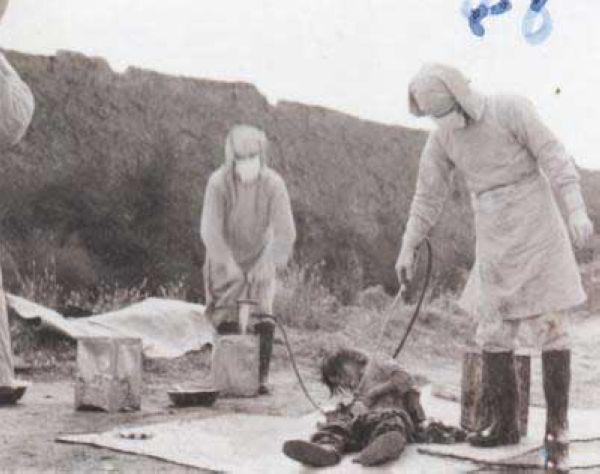Benjamin Lai is an expert on the modern Chinese military and author of The Dragon’s Teeth. Last month, the national Japanese broadcaster showed a documentary about the existence of Unit 731 during the Second World War. Benjamin explains why this is of such importance.

Today the former HQ of Unit 731 is a museum on the outskirts of Harbin in North East China.
This year on the 15th of August the Japanese National TV station broadcast a documentary unlike any other to mark the end of World War Two. Previous historical analysis by the Japanese on WW2 had before this point always run on the theme that the Japanese were also the victims of war. Seldom will a Japanese producer of an historical documentary dare to tread on the issue of war crimes and the responsibility of war.
For the first time in the history of Japan, an institution of the establishment has openly admitted to the hideous war crimes committed by Unit 731, the secretive Japanese Biological Warfare unit. With its headquarters in modern day Harbin in NE China, Unit 731 was responsible for some of the most revolting experiments conducted on human beings. The victims were men, woman and children, civilians and POWs, Asians and Caucasians. The purpose of the unit was to conduct research on biological and chemical warfare, performing experiments using bubonic plague, cholera, anthrax, typhoid and tuberculosis using live human subjects.
What makes this TV documentary unique was that it was based on Soviet archives, many of which were film and voice recordings of Japanese POWs captured by the Soviets in the dying days of WW2. In the 72 intervening years, the Japanese government had always denied the existence of Unit 731 and any requests for information by historians and academics had always been refuted by a cleverly well rehearsed reply: ‘There are no records of such a Unit in Japan’.

Was it coincidental or was it deliberate that Japanese Prime Minister Abe Shinzo chose to sit in a Japanese warplane with 731 as its code?
These unique voice records made during the Khabarovsk War Crime trials of 1949 let the audience hear for themselves, in original Japanese, what ex-members of Units 731 did in China. In one such recording, the Japanese defendant admitted to participating in an experiment conducted sometime towards the end of 1943, where they lured 50 Chinese people from a train station to become guinea pigs to test the effectiveness of their experimental vaccine. Sugary sweets laced with salmonella were given out and 13 out of the 50 involved in the experiment died. More heinous experiments such as using animal blood as a substitute for human blood caused victims to die a very painful death, and people were injected with sea water to determine if it could be used as a substitute for saline solution. Parts of human organs such as the liver or stomach were removed to determine how long one could live with only a partial organ.
Because of the Cold War, the war crime trials carried out by the Soviet Union were blocked by the Americans, and those members of Unit 731 who managed to escape before the arrival of the Soviets were given immunities from prosecution by the Americans for the exchange of information and data from human experimentation. Some ex-unit members like Kitano Masaji and Dr Naito Ryoichi went on to achieve commercial success in post war Japan through the Green Cross Corporation, where many of the senior members were 731 veterans. Green Cross was a leading supplier of blood products, and is one of the five drug firms named in lawsuits by haemophiliacs who contracted HIV through tainted blood products. After the death of Dr Ryoichi, Green Cross went through several transformations, through merger and acquisition ended up as part of Mitsubishi Pharma Corporation. It is quite astonishing to believe that elements of the Japanese pharmaceutical industry are directly descended from one of the vilest episodes during the Second World War.

For more about current Chinese affairs, check out Benjamin Lai’s latest book, The Dragon’s Teeth: The Chinese People’s Liberation Army: Its History, Traditions, and Air Sea and Land Capability in the 21st Century.

 Follow
Follow